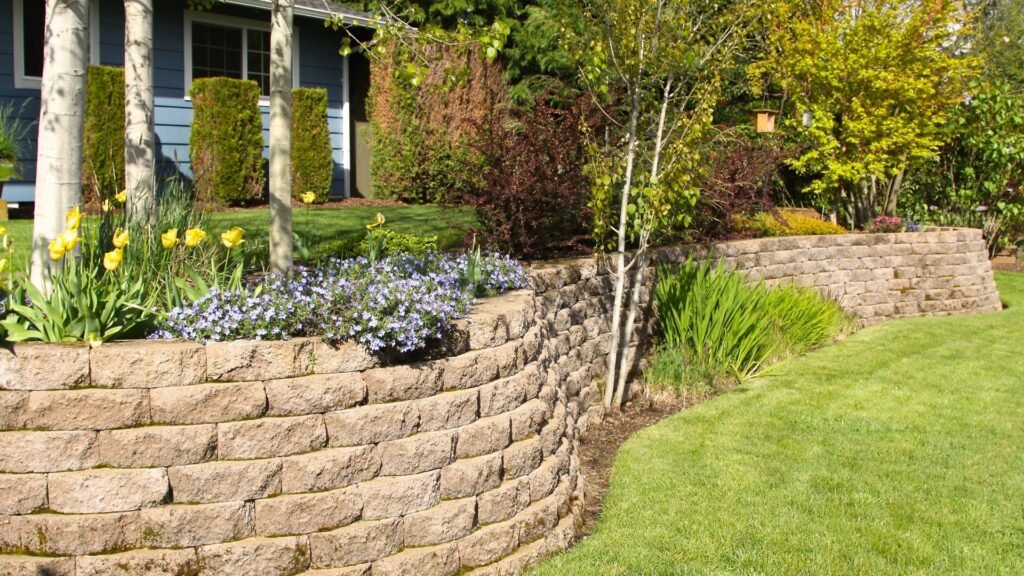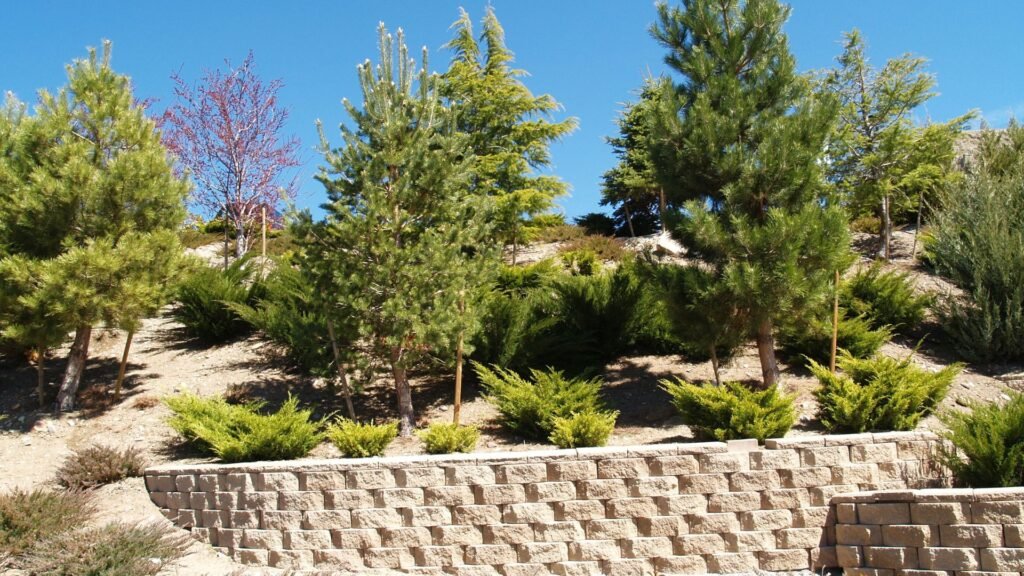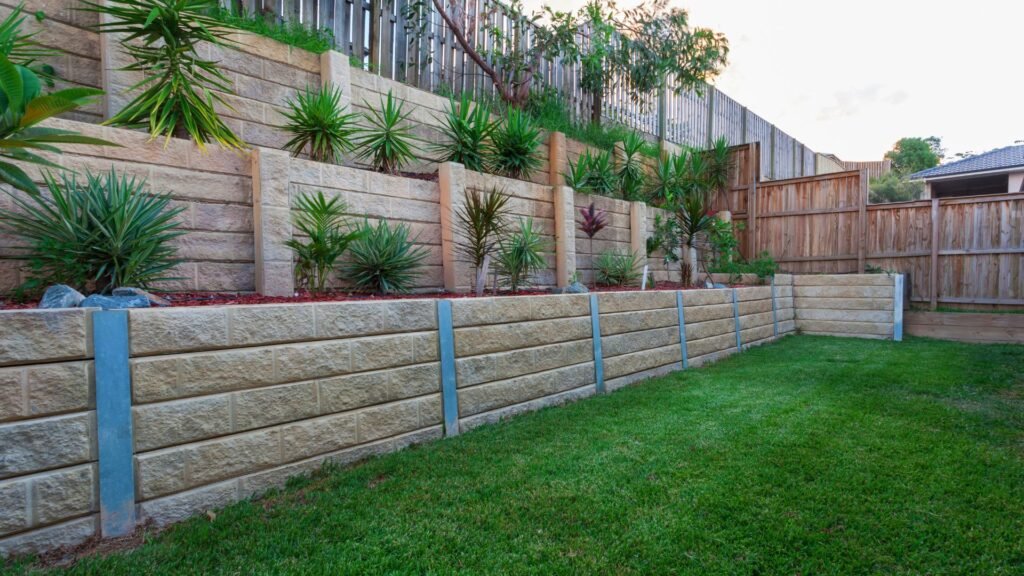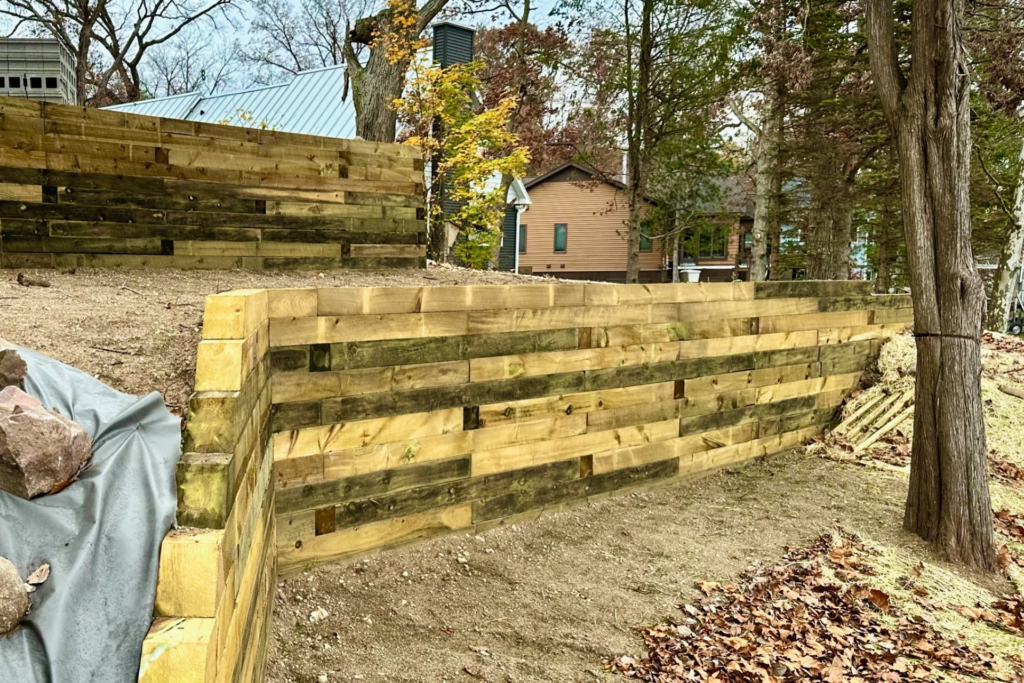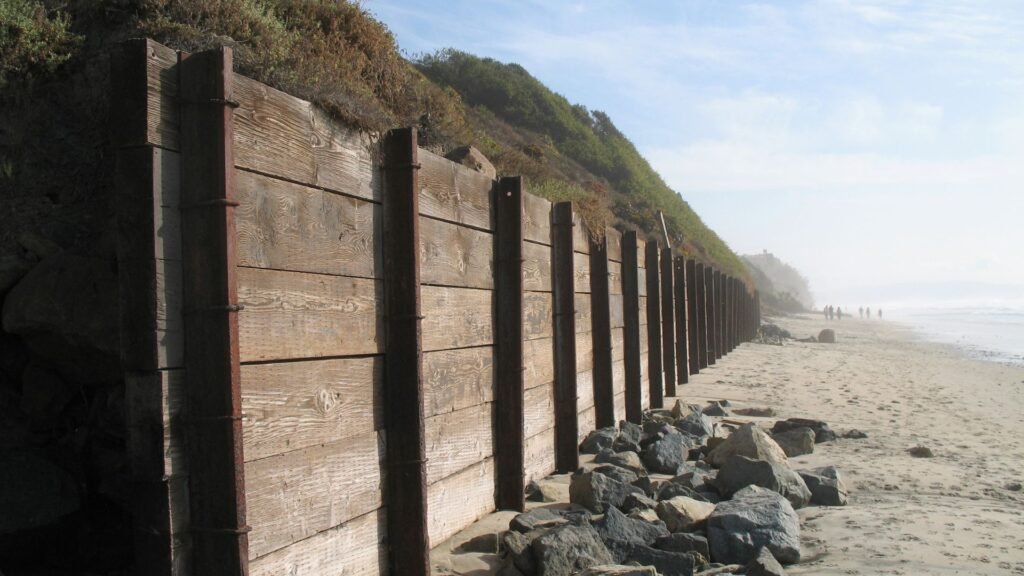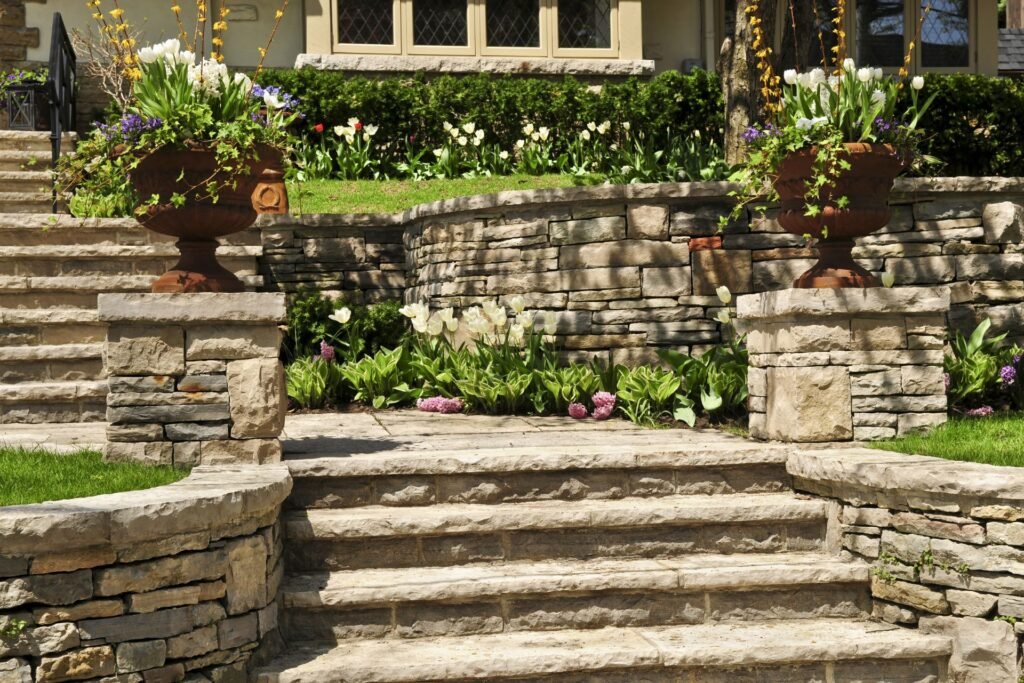Welcome to your ultimate guide on Keystone Retaining Walls in New Zealand! Whether you’re looking to transform a sloping backyard, create functional outdoor spaces, or simply enhance your home’s curb appeal, keystone retaining walls offer a durable and visually appealing solution. In this post, we’ll explore everything you need to know about these versatile structures—what they are, why they’re a smart choice for Kiwi homeowners, and how they can handle New Zealand’s unique landscape challenges. From easy DIY installation tips to long-term benefits, you’ll discover why keystone retaining walls are the perfect blend of strength, style, and practicality for your property. Let’s dive in!
Keystone retaining walls in NZ are a popular choice for landscaping due to their durability, ease of installation, and aesthetic appeal. These modular retaining walls are designed to handle New Zealand’s varied terrain and climate, offering long-lasting support for sloped gardens, terraces, and outdoor spaces. With their interlocking system, keystone walls are ideal for both DIY enthusiasts and professional landscapers, providing a cost-effective solution that blends functionality with style.
Table of Contents
What Are Keystone Retaining Walls?
Keystone retaining walls are a popular choice for both residential and commercial landscaping projects, known for their strength, versatility, and aesthetic appeal. These walls are essential in creating level spaces, managing slopes, and preventing soil erosion. Let’s dive deeper into what makes keystone retaining walls a reliable solution for such tasks.
Explanation of Structure
Keystone retaining walls are built using modular blocks, designed to interlock and create a strong, stable structure. Each block fits together like puzzle pieces, allowing the wall to form a flexible system that can withstand natural shifts in the earth. The modular design not only makes installation more straightforward, but it also allows for a range of design options, such as curves, tiers, or straight walls. This interlocking system relies on gravity and friction to maintain stability, which helps distribute pressure from the retained soil evenly across the structure. This is a significant advantage, especially when constructing taller walls or walls that must support large amounts of soil.
The flexibility of the keystone retaining wall system also enables it to perform well in varying terrains, from flat landscapes to steep slopes. With the right design, these walls can be both a functional and decorative feature in any outdoor space.
Materials and Types
Keystone retaining walls are commonly constructed from concrete, but other materials like stone can also be used depending on the aesthetic or functional needs of the project. In New Zealand, concrete is the most popular material due to its durability and adaptability to different climates. The concrete blocks used in keystone walls are often designed with textured or colored surfaces to blend seamlessly with the surrounding environment. Additionally, some blocks are manufactured to mimic the appearance of natural stone, giving property owners a range of design options that suit both modern and traditional landscaping styles.
Other materials that can be used in keystone retaining walls include natural stone, which offers a more rustic and organic look, but typically comes at a higher cost and requires more labor-intensive installation. The advantage of using concrete is its cost-effectiveness, ease of installation, and lower maintenance needs, which makes it a popular choice for both large-scale commercial projects and smaller residential jobs across New Zealand.
Comparison with Other Retaining Wall Types
When comparing keystone retaining walls to other retaining wall options such as timber or stone, several benefits stand out. Timber retaining walls, while cheaper initially, tend to degrade over time, particularly in New Zealand’s damp and earthquake-prone climate. Wooden structures can suffer from rot, termites, and warping, leading to expensive repairs or replacements over the years.
Stone walls, on the other hand, are durable and visually appealing but are much more labor-intensive and costly to construct. They require precise placement and can be less flexible in design than modular keystone systems. Keystone retaining walls strike the perfect balance between durability, cost-efficiency, and design flexibility. Unlike timber walls, they are resistant to rot, and unlike traditional stone walls, they offer easier installation and customization. This combination of benefits makes keystone retaining walls a preferred choice for many landscape projects in New Zealand.
Durability and Performance
Keystone retaining walls are engineered to withstand New Zealand’s unique environmental challenges, such as heavy rainfall, earthquakes, and frequent temperature fluctuations. The interlocking block system creates a highly durable structure capable of withstanding these natural forces. In regions prone to heavy rain, drainage is a critical factor in retaining wall construction. Keystone walls are often designed with built-in drainage solutions, allowing water to pass through the structure rather than building up behind it, which could otherwise cause failure in the wall.
In earthquake-prone areas, keystone retaining walls are particularly valuable because their flexible design allows them to shift and adjust slightly without cracking or collapsing. This makes them ideal for New Zealand’s seismic landscape, offering both peace of mind and long-term stability for property owners.
Moreover, the use of high-quality materials like concrete ensures that these walls can stand the test of time with minimal maintenance. They are also less prone to erosion or weathering compared to other materials like timber. When designed and installed correctly, keystone retaining walls can last for decades, providing a durable, efficient, and aesthetically pleasing solution for managing outdoor spaces in New Zealand.
By understanding the structure, materials, and advantages of keystone retaining walls, it’s clear why they are a go-to solution for both homeowners and developers in New Zealand. Their ability to combine strength, flexibility, and design versatility makes them an excellent choice for any project requiring reliable soil retention and aesthetic appeal.
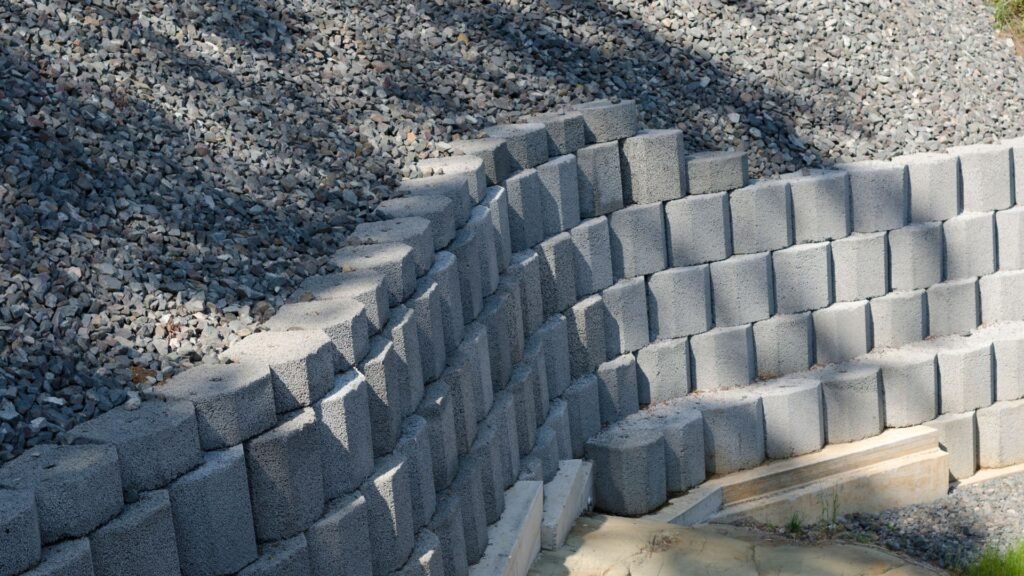
Why Choose Keystone Retaining Walls For Your NZ Property?
When considering a retaining wall solution for your New Zealand property, keystone retaining walls offer a compelling blend of strength, versatility, and environmental benefits. Here’s a closer look at why keystone retaining walls should be your go-to choice.
1. Strength and Durability
One of the primary reasons to opt for keystone retaining walls is their unmatched strength and durability. These walls are engineered to withstand New Zealand’s often unpredictable weather conditions, from heavy rain to shifting soil. Built from high-quality materials, keystone walls provide long-lasting support, especially in areas prone to erosion, making them an ideal solution for properties located on slopes or near water sources. They are designed to resist the pressures of the earth and are less prone to cracking or warping over time compared to other retaining wall options, giving you peace of mind for years to come.
2. Aesthetic Flexibility
Keystone retaining walls don’t just serve a functional purpose; they also offer a wide range of design possibilities. Whether your home features a contemporary aesthetic or a more rustic, natural look, keystone walls can be customized to blend seamlessly into your landscape. With various colors, textures, and patterns available, these walls can complement any outdoor space, enhancing the overall visual appeal of your property. From creating elegant garden terraces to defining walkways and patios, keystone walls provide the flexibility to tailor the design to your exact preferences.
3. Easy Installation
Another standout feature of keystone retaining walls is their ease of installation. These walls are designed with a simple, modular construction that makes them perfect for DIY projects. Even if you don’t have extensive experience in landscaping, you can build a keystone wall with relative ease, saving both time and money on professional labor. The interlocking block system is intuitive, allowing you to create sturdy walls without the need for mortar or complex tools. For homeowners looking to undertake a weekend project or those on a budget, keystone retaining walls are an excellent option.
4. Cost-Effectiveness
When it comes to long-term value, keystone retaining walls are hard to beat. While the initial cost may be comparable to other materials, the long-term benefits set them apart. Keystone walls require minimal maintenance, which means fewer repairs and lower overall costs throughout their lifespan. Unlike wooden or metal retaining walls, which can rot or rust over time, keystone walls are built to last, reducing the need for costly replacements. In terms of durability and reduced upkeep, keystone walls are an investment that pays off in the long run.
5. Eco-Friendliness
In today’s world, eco-conscious landscaping is a growing priority for homeowners, and keystone retaining walls offer several environmentally friendly benefits. Their design allows for efficient water drainage, which helps prevent soil erosion and reduces water runoff, protecting your property from potential damage. Additionally, by using keystone walls, you can incorporate sustainable practices such as rainwater harvesting or create garden spaces that promote healthy plant growth. Their eco-friendly nature makes keystone retaining walls a responsible choice for both your property and the planet.
Use Cases: Where to Use Keystone Retaining Walls in New Zealand Homes
Keystone retaining walls are a versatile solution for a variety of landscaping needs in New Zealand. They are commonly used in:
- Gardens: Create raised garden beds or terraces, perfect for growing plants, flowers, or even vegetables in otherwise unusable sloped areas.
- Driveways: Install keystone walls alongside driveways to provide structural support while enhancing the overall appearance of your entryway.
- Terraces: Build multi-level terraces to make the most of a hilly or uneven property, giving you more usable outdoor space.
In conclusion, keystone retaining walls offer the perfect blend of strength, design flexibility, and environmental benefits, making them an ideal choice for any New Zealand property. Whether you’re looking to tackle a DIY project or seeking a cost-effective, long-term solution, these walls provide the durability and versatility to meet your needs.

Step-By-Step Guide To Building A Keystone Retaining Wall
Building a keystone retaining wall can transform your outdoor space, providing both functional support and aesthetic appeal. Whether you’re looking to prevent soil erosion or create a striking landscape feature, this step-by-step guide will walk you through the process of building a keystone retaining wall tailored to New Zealand’s unique environment.
Step 1: Planning Your Wall
Before diving into the construction, planning is the most critical phase. First, assess the area where you plan to build the wall. Consider factors such as the slope, soil type, drainage, and nearby structures that might impact the wall’s design and longevity. In New Zealand, local council regulations play a significant role, especially if the wall exceeds a certain height (typically around 1.5 meters). Be sure to check with your local council regarding any necessary permits before proceeding with the build. Understanding these requirements will help you avoid complications later on and ensure your wall is compliant with safety standards.
Step 2: Gathering Materials
Once you’ve planned your project, the next step is to gather the necessary tools and materials. Here’s a list of what you’ll need:
- Keystone blocks (available at most hardware stores in NZ)
- Gravel or crushed stone for drainage and base fill
- Base material (such as compacted sand or road base)
- Geotextile fabric (to prevent soil from clogging the drainage)
- Backfill material (typically gravel or crushed rock)
- Shovel, level, wheelbarrow, and compactor for excavation and leveling
- Rubber mallet for adjusting blocks
- Capping blocks to finish the top layer
Most of these materials are easily accessible in New Zealand from suppliers like Mitre 10 or Bunnings, which stock keystone blocks and necessary landscaping supplies.
Step 3: Preparing the Ground
With your materials in hand, it’s time to prepare the ground. Start by measuring and marking out the wall’s footprint. Excavation is the next step—dig a trench at least 200mm deeper than the height of the first block layer to allow space for the base material. The width of the trench should be slightly wider than the blocks themselves.
Once the trench is dug, the foundation must be leveled. This is crucial for the stability of the wall. Spread a layer of compacted base material, making sure it’s at least 100mm thick. Use a compactor to ensure a solid and stable base, as this layer will bear the weight of the entire structure.
Step 4: Installing the Base Layer
The first row of keystone blocks is the most important, as it sets the foundation for the rest of the wall. Carefully lay the first block in the trench, checking that it is level both front-to-back and side-to-side. Use a rubber mallet to make minor adjustments as needed.
Continue laying the blocks along the trench, ensuring each block is perfectly level with the others. Any misalignment in this layer will only be magnified as you build up, so take your time during this stage to get everything right. The base layer should also be installed slightly below ground level to help anchor the wall in place.
Step 5: Building Up the Wall
After the base layer is set, you can begin stacking the keystone blocks. These blocks are designed to lock into place as they are stacked, providing additional stability. Offset each row of blocks slightly from the one below, in a brick-like pattern. This helps to distribute pressure and adds strength to the wall.
Backfill each layer with gravel or crushed stone, which provides drainage and prevents water buildup behind the wall. Make sure to compact the backfill material to avoid settling over time. For taller walls, consider using geogrid reinforcement for added stability.
Step 6: Final Touches
Once you’ve reached the desired height of your retaining wall, it’s time for the finishing touches. Install capping blocks on the top layer, securing them with landscape adhesive. These caps provide a polished, professional look and add structural integrity to the top of the wall.
Finally, integrate the wall into your landscape by adding plants, mulch, or decorative stones around it. This not only enhances the aesthetic appeal but also helps with drainage and erosion control.
DIY vs. Hiring a Professional
Building a keystone retaining wall can be a satisfying DIY project for homeowners who are comfortable with tools and manual labor. However, if the wall is over a certain height (typically 1.5 meters or higher), or if you are dealing with challenging terrain, it may be best to hire a professional landscaper. In New Zealand, professional landscapers are familiar with local building codes and can ensure your wall is built to last. They can also manage more complex aspects like drainage and reinforcement.
Ultimately, whether you decide to DIY or hire a professional depends on the complexity of the project and your comfort level. For small garden walls, a DIY approach can be cost-effective and rewarding. For larger, more complicated structures, a professional’s expertise will provide peace of mind and ensure the wall stands strong for years to come.
By following these steps and considering local regulations, you can build a sturdy and attractive keystone retaining wall that enhances your outdoor space and adds value to your property.

Maintenance Tips For Keystone Retaining Walls
Proper maintenance of keystone retaining walls is essential for their longevity and aesthetic appeal. If you own a keystone wall, you know that it’s a strong and versatile solution for managing sloped areas in your landscape. However, like any structural feature, it requires routine care to remain in good condition. Here are some practical tips to help you maintain your keystone retaining wall effectively:
1. Regular Inspections
Performing regular inspections is one of the simplest yet most crucial ways to keep your retaining wall in top shape. Over time, even the sturdiest walls can show signs of wear due to weather conditions, natural ground movement, or the weight they hold back. During your inspections, check for the following:
- Cracks in the blocks: Small cracks can appear over time, especially in regions prone to freeze-thaw cycles.
- Shifting or loose blocks: Look for any signs of blocks that have moved or appear loose. This could be a sign of foundation issues or soil movement.
- Gaps between blocks: As the ground settles, you might notice gaps forming between some blocks. Catching this early allows for minor adjustments, which can prevent more significant repairs later.
By identifying these issues early on, you can address them before they lead to more extensive damage.
2. Dealing with Drainage
Proper drainage is essential to the structural integrity of a keystone retaining wall, particularly in areas with heavy rainfall, such as many parts of New Zealand. Water buildup behind the wall can lead to hydrostatic pressure, which can cause bulging, cracking, or even complete wall failure over time. Here are a few steps to manage drainage effectively:
- Check weep holes: Most retaining walls are built with weep holes that allow water to escape. Ensure these holes remain unobstructed so that water can flow through.
- Install drainage pipes: If your wall doesn’t have a drainage pipe installed, consider adding one. A perforated pipe behind the base of the wall can significantly reduce water pressure.
- Backfill with gravel: Gravel or coarse sand backfill allows water to move freely through the soil, preventing water from becoming trapped behind the wall.
By maintaining proper drainage, you reduce the risk of damage from water buildup, ensuring your keystone retaining wall stays secure for years to come.
3. Cleaning and Upkeep
Keeping your keystone retaining wall clean not only improves its appearance but also helps prevent moss, algae, and dirt buildup that could potentially weaken the structure over time. Here’s how you can keep your wall looking fresh:
- Power washing: A gentle power wash can remove dirt, moss, and other organic buildup without damaging the blocks. Be cautious not to use too high of a pressure setting to avoid surface damage.
- Manual scrubbing: For areas with tough stains, use a brush with a mild detergent or specialized masonry cleaner to scrub the blocks.
- Preventative care: Trimming plants and maintaining nearby vegetation can prevent roots from growing into the wall or causing cracks. Plus, it keeps the wall clear from debris that might hold moisture and lead to mold or mildew growth.
Regular cleaning not only enhances the appearance but also helps prolong the lifespan of the wall.
4. Repairs and Adjustments
Even with the best care, you may notice minor issues that need repair over time. Many of these small problems can be fixed by homeowners without professional help. Here’s what you can handle on your own:
- Replacing individual blocks: If a single block is cracked or damaged, it’s often possible to replace just that block without disturbing the entire wall.
- Re-leveling blocks: If blocks have shifted slightly, you can carefully remove and re-level them using a rubber mallet or re-tamping the soil underneath.
- Filling gaps: Small gaps between blocks can be filled with a suitable masonry or concrete sealant to prevent further movement or water infiltration.
However, for more significant issues like large cracks, bulging sections, or visible structural damage, it’s best to call in an expert. Professional repairs will ensure that your wall remains stable and secure without risking further damage.
By following these maintenance tips, you can keep your keystone retaining wall looking great and functioning properly for many years. Regular upkeep not only helps prevent costly repairs but also ensures that your landscape feature remains a strong and beautiful part of your outdoor space.

Keystone Retaining Walls And NZ Building Regulations
When building Keystone retaining walls in New Zealand, it’s crucial to understand the specific building regulations that apply. Local councils have set rules to ensure safety, durability, and compliance with structural standards, especially in an earthquake-prone country like New Zealand. This section will guide you through the key aspects of these regulations, focusing on height restrictions, the necessity of permits, and the importance of professional oversight.
Overview of Local Rules
In New Zealand, retaining walls are commonly used to prevent soil erosion and manage changes in landscape elevation. However, not all retaining walls are built alike, and certain regulations must be followed. One of the most important factors to consider is the height of the wall. According to New Zealand building regulations, retaining walls up to 1.5 meters in height generally do not require a building consent, provided they are not supporting any additional loads, such as a driveway or structure above the wall. However, if the wall exceeds this height or bears additional weight, stricter guidelines come into play.
Another key regulation is that all retaining walls, regardless of height, must be constructed safely to prevent future damage or collapse. Even smaller walls that do not require consent must be built with proper drainage systems and stable materials to ensure longevity and structural soundness.
Council Permits
When planning a retaining wall project in New Zealand, you may need to apply for a building consent, especially for walls that are over 1.5 meters in height. Council permits are essential for ensuring that your construction meets safety standards, particularly in areas prone to seismic activity.
If your wall exceeds the 1.5-meter threshold, or if it supports additional structures, you must submit detailed plans and calculations to your local council. These documents typically include specifications on materials, drainage solutions, and the load the wall will support. The council will review your proposal to ensure it meets the Building Code requirements for strength and durability, especially in relation to earthquake resilience.
Additionally, some local councils may have their own specific requirements, which could differ slightly from the national regulations. It’s important to consult your local council early in the planning process to understand any extra requirements and avoid delays.
Hiring a Structural Engineer
For larger or more complex retaining wall projects, hiring a structural engineer is not only advisable but often necessary. A professional engineer can assess the soil conditions, determine the appropriate materials, and design a wall that will stand the test of time, including withstanding potential earthquakes.
New Zealand’s Building Code places strong emphasis on earthquake resilience, given the country’s active seismic landscape. A structural engineer ensures that your Keystone retaining wall meets these stringent earthquake safety standards, minimizing the risk of damage in the event of seismic activity.
By working with a professional, you also ensure that your retaining wall complies with all local regulations and building codes, avoiding potential fines or costly rework. Engineers can provide essential documentation that will likely be required by your local council when applying for building consents, especially for larger walls.
Building a Keystone retaining wall in New Zealand involves more than just stacking blocks; it requires careful attention to local regulations, height restrictions, and, in some cases, council permits. If your wall is over 1.5 meters or subject to additional load-bearing requirements, obtaining a permit and hiring a structural engineer are necessary steps. Following these guidelines ensures your project complies with NZ building regulations while maintaining safety, durability, and earthquake resilience.
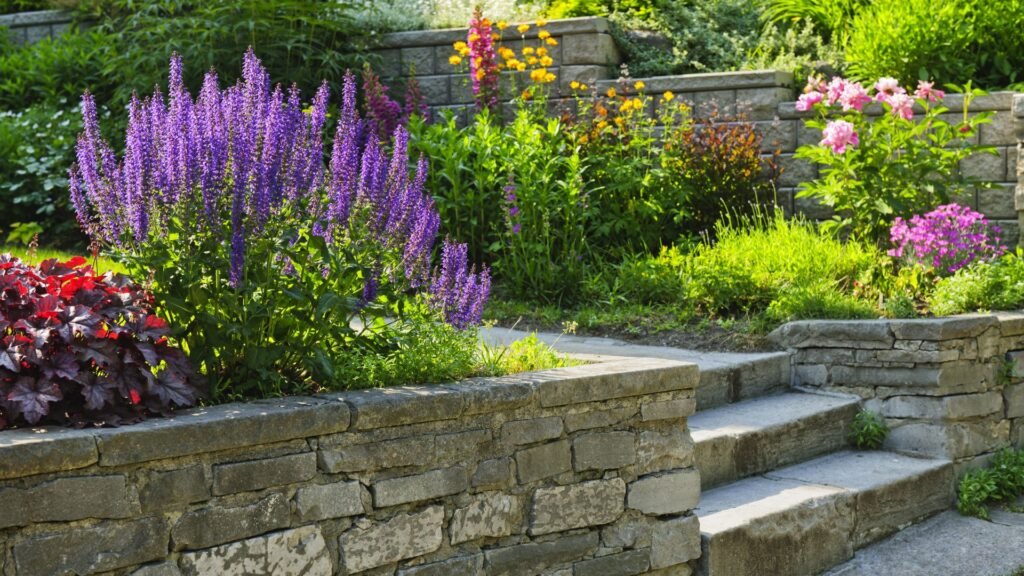
Real-Life Examples And Inspiration From New Zealand Homes
Keystone retaining walls have become a popular landscaping solution in many New Zealand homes due to their versatility, strength, and aesthetic appeal. They are not just functional; they can completely transform outdoor spaces. Below, we explore some real-life examples, before-and-after transformations, and customer testimonials that highlight the power of keystone walls in bringing outdoor areas to life.
Showcase Projects
In various residential and public spaces across New Zealand, keystone retaining walls have been used to solve sloping terrain challenges while adding a stylish touch to the landscape.
One notable project is a home in Auckland’s North Shore, where homeowners faced an unusable sloped garden. By installing a keystone retaining wall, they turned the steep incline into a series of beautiful terraces. These terraces not only provided a stable structure to prevent erosion but also created additional space for garden beds and a walkway. The natural stone texture of the keystone blocks perfectly complemented the surrounding greenery, blending into the environment seamlessly.
In another example, a property in Queenstown utilized keystone walls to create a stunning outdoor seating area overlooking the lake. Before the renovation, the backyard was uneven and difficult to navigate. With the help of a professional landscaper, the keystone wall was installed to level the ground and offer support, ultimately creating a flat and functional space for outdoor furniture. The aesthetic appeal of the keystone design enhanced the overall vibe, turning it into a key feature of the property.
Public spaces have also benefited from keystone retaining walls, such as in a Wellington park where they were used to line walking paths and gardens. The walls not only support the natural landscape but also add a sense of structure and elegance to the park, making it a popular spot for both locals and visitors.
Before and After Transformations
One of the most compelling aspects of keystone retaining walls is how they can completely change the look and usability of an outdoor space. Before installation, many New Zealand homeowners are faced with steep slopes, limited garden space, and issues with soil erosion. After incorporating keystone walls, these outdoor areas are transformed into level, functional spaces that enhance the property’s value and usability.
Take, for example, a family home in Tauranga that initially struggled with a backyard too steep to enjoy. The sloped terrain made it impossible to create a play area for their children. After a keystone retaining wall was installed, the space was leveled, and they were able to create an expansive lawn area, perfect for outdoor activities. The transformation was dramatic—the family went from an unusable, uneven yard to a beautiful and functional space that became the highlight of their property.
Similarly, a Christchurch property saw a remarkable change after keystone retaining walls were used to carve out garden beds on what was previously a hill. The result was a modern, tiered garden with native plants, adding both aesthetic appeal and functionality to the home. These before-and-after transformations clearly show how keystone walls can bring even the most challenging landscapes under control.
Customer Testimonials
Homeowners and landscapers across New Zealand have praised keystone retaining walls for their durability, ease of installation, and the transformative effect they have on outdoor spaces. Here are a few quotes from satisfied customers:
“We had an awkward slope in our backyard that we never knew how to deal with. After working with a local contractor to install a keystone retaining wall, we now have a beautiful terrace garden, and it has completely changed how we use our outdoor space.” – Sarah T., Auckland
“As a landscaper, I recommend keystone retaining walls to my clients because they offer both functionality and design flexibility. They’re perfect for stabilizing slopes while still allowing for creative landscape design.” – Matt P., Christchurch
“The keystone wall in our front yard made such a difference. Before, we had constant issues with soil erosion. Now, not only is the space much more stable, but it also looks amazing. We’ve had so many compliments from neighbors.” – John and Emma R., Wellington
These real-life examples and testimonials from New Zealand homes illustrate the wide-ranging benefits of keystone retaining walls. Whether you’re dealing with a sloped garden, a need for more usable outdoor space, or simply want to improve the overall look of your landscape, keystone walls provide a versatile and aesthetically pleasing solution.
Inspiration from these projects shows how keystone retaining walls are not just practical but can also be a key design element in modern outdoor spaces.
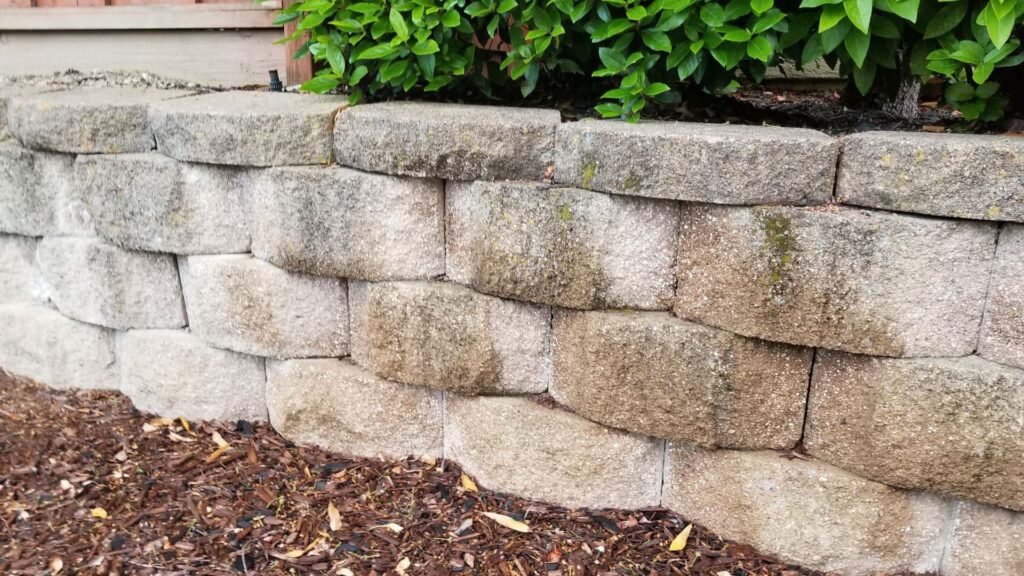
FAQs: About Keystone Retaining Walls NZ
What is a keystone retaining wall?
A keystone retaining wall is a modular wall system made of interlocking blocks designed to retain soil and create stable, level surfaces in sloped areas. The blocks fit together without the need for mortar, making them flexible and durable for various landscaping projects.
Why are keystone retaining walls popular in New Zealand?
Keystone retaining walls are popular in New Zealand due to the country’s hilly terrain and variable climate. Their strength and stability make them ideal for withstanding New Zealand’s frequent rainfall, and they are also designed to endure seismic activity. Additionally, they offer an aesthetic solution for landscaping, fitting in with both urban and rural settings.
Can I install a keystone retaining wall myself?
Yes, keystone retaining walls are DIY-friendly. The interlocking blocks are designed for easy installation without needing special tools or materials like mortar. However, for larger or more complex projects, or for walls exceeding a certain height, it’s advisable to consult a professional to ensure stability and safety.
What materials are keystone retaining walls made from?
Most keystone retaining walls are made from high-strength concrete, but they can also be constructed from natural stone or other composite materials. Concrete blocks are the most common due to their affordability, durability, and availability in various shapes and colors to suit different design preferences.
How long do keystone retaining walls last?
When installed correctly and maintained properly, keystone retaining walls can last for several decades. Their design ensures long-term stability and resistance to environmental factors like water damage, shifting soil, and seismic activity, making them a reliable choice for landscaping in New Zealand.
What are the benefits of choosing keystone retaining walls over other types?
Keystone retaining walls offer several advantages over traditional materials like timber or stone. They are more durable, require less maintenance, and can be customized to fit various design styles. Their interlocking system also allows for easier and faster installation, and they tend to be more cost-effective in the long run due to their low upkeep requirements.
Are keystone retaining walls environmentally friendly?
Yes, keystone retaining walls are considered environmentally friendly. Their design promotes proper drainage, which helps prevent soil erosion and water runoff. In addition, they can be integrated into eco-friendly landscaping designs, such as rain gardens or permeable surfaces, making them a sustainable choice.
Do I need a permit to build a keystone retaining wall in New Zealand?
In New Zealand, you may need a permit if your retaining wall exceeds a certain height (typically 1.5 meters) or if it is near a boundary. It’s important to check with your local council for specific regulations and requirements, as rules can vary depending on location.
How do I maintain a keystone retaining wall?
Maintaining a keystone retaining wall involves regular inspections to ensure that no blocks have shifted or cracked. Keep the drainage system clear to prevent water buildup, and clean the surface of the blocks periodically to remove dirt, moss, or algae. If you notice any damage, it’s best to repair it promptly to avoid structural issues.
Can keystone retaining walls be used for both residential and commercial properties?
Yes, keystone retaining walls are suitable for both residential and commercial properties. Their versatility makes them ideal for a wide range of applications, from small garden walls and driveway borders to large-scale commercial retaining systems in public spaces or developments. Their strength and customizability make them a preferred choice in both sectors.
Conclusion
In conclusion, keystone retaining walls offer an ideal solution for many homeowners in New Zealand, thanks to their durability, visual appeal, and versatility in various landscaping projects. These walls not only provide strong structural support for sloped areas but also enhance the aesthetic value of outdoor spaces with their clean, modern look. Their ability to withstand harsh weather conditions makes them a long-lasting option, while their modular design allows for flexible installation. If you’re considering a landscape upgrade, exploring keystone retaining wall options is a smart choice. For tailored advice, visit a local supplier or consult a landscaping professional to determine the best approach for your project.
About the Author:
Mike Veail is a recognized digital marketing expert with over 6 years of experience in helping tradespeople and small businesses thrive online. A former quantity surveyor, Mike combines deep industry knowledge with hands-on expertise in SEO and Google Ads. His marketing strategies are tailored to the specific needs of the trades sector, helping businesses increase visibility and generate more leads through proven, ethical methods.
Mike has successfully partnered with numerous companies, establishing a track record of delivering measurable results. His work has been featured across various platforms that showcase his expertise in lead generation and online marketing for the trades sector.
Learn more about Mike's experience and services at https://theleadguy.online or follow him on social media:

